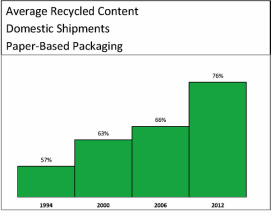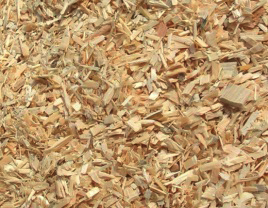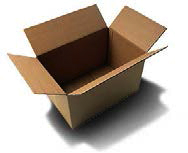
Canadian paper packaging mills near 80% average recycled content
By Canadian Packaging Staff
Sustainability boxboard Containerboard GreenBlue international standards organization Paper & Paperboard Packaging Environmental Council Blue Box PPEC recycled content for paper packaging recycled paper SPC Sustainable Packaging CoalitionPPEC offers document on how to understand recycled content in paper packaging.
The average recycled content of paper packaging produced by Canadian mills for use in Canada is close to 80 per cent, according to the industry’s environmental council, PPEC (Paper & Paperboard Packaging Environmental Council) in a press release dated June 25, 2013.
PPEC represents the Canadian paper packaging industry on environmental issues, and surveys the industry every two years and has been tracking recycled content since 1990. For 2012, the average was 76.4 percent, basically the same as in 2010.
“What we have seen over the years,” says PPEC executive director John Mullinder, “is an increasing mill reliance on recovered paper and board, whether from industrial or residential sources.
“Most packaging mills in Canada now produce 100 per cent recycled content material. Eight sites produce what we call a blend between recycled and virgin fiber, and three mills use only virgin fiber.”
Mullinder continues, “Actually, virgin is a bit of a misnomer since these mills primarily use wood chips and sawmill residues that are left over from lumber operations as their feedstock, rather than fresh trees.”
Domestic shipments of containerboard used to make corrugated boxes averaged 81 per cent recycled content in 2012, while its lightweight cousin, the boxboard carton, averaged 70 per cent. Kraft paper packaging averaged 35 per cent.
PPEC’s background report: Understanding Recycled Content (and why requiring minimum levels is not the answer for paper packaging), is presented here:
Understanding Recycled Content (and why requiring minimum levels is not the answer for paper packaging)
1. Recycled content is usually expressed as an average. This could be an average of a mill’s particular production run (so each customer can label the recycled content of its packaging) or an average over a much longer period of time (normally 12 months) for mill or industry averages. PPEC asks all Canadian-based packaging mills for recycling data every two years. National average recycled content percentages are then determined by dividing the number of tonnes shipped by the number of tonnes of recycled paper or board used in those shipments. For example, in 2012, of the 1.6 million tonnes of packaging material shipped domestically in Canada some 1.2 million tonnes comprised recycled paper or board (giving an average recycled content of 76.4 per cent).
2. There are actually two types of recycled content: pre-consumer and post-consumer (both recognized by the International Standards Organisation (ISO) and by Canada’s “Guidelines” for environmental labeling.
(Environmental Claims: A guide for industry and advertisers [Competition Bureau, Canadian Standards Association]).
PPEC does not distinguish between the two in its survey results because both divert used paper material for further recycling. “Pre-consumer” recycled content includes corrugated clippings or boxboard trim that is left over from the process of converting board from a mill into a converted product (a box, bag, or carton) and then sent back to a mill for recycling, while “post-consumer” material is a converted package that is sent for recycling after use by industrial, commercial, institutional or residential users.
Some people have the impression that “post-consumer” material is somehow environmentally superior to “pre-consumer” material. PPEC (and ISO) do not support this supposition. The amount of trim or cuttings (pre-consumer material) at a box plant, for example, is actually relatively small because maximizing the use of the whole board that has already been paid for is in the best interests of the plant and/or its customer. The next customer will get some of this trim in the next piece of board purchased, and so on in a continuous recycling loop, so the brand-owner/retailer should get credit for recycling this, in our view.
There is a further argument for including some recognition of this off-site trim or cuttings. And that is that, generally speaking, a mill needs an extra 10 tonnes of used paper or board to produce 100 tonnes of recycled product shipped out the door. This is because paper fibers shrink in the pulping process. Even though a mill has paid a municipality or a broker for 110 tonnes, and technically re-pulped 110 tonnes, it makes no claim for recycling more than 100 tonnes for recycled content purposes. It does not seem unreasonable in this light, to claim trim and cuttings as some sort of trade-off for the shrinkage that is not claimed.
3. Average recycled content varies between packaging grades. The average recycled content of paper packaging shipped domestically by Canadian mills noted above (76.4 per cent) is, in fact, a combined average, including all three main packaging grades: containerboard, boxboard (called paperboard in the US), and kraft paper packaging. But each of these grades also has its own average, depending largely on its particular packaging function.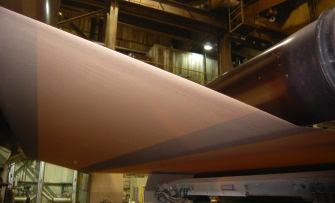
For example, Kraft paper is predominantly used to make multi-wall sacks and grocery bags. For this you need strong paper fibers (kraft is the German word for strong). Paper bags in Canada are mostly made from woodchips and sawmill residues left over from lumber operations. Nothing is wasted. Even rotten, bent, or twisted sawlogs are salvaged and used.
One Canadian mill uses mostly old corrugated boxes collected from supermarkets and factories or from curbside (what the industry calls recycled pulp) to make bag material. The average recycled content of kraft paper packaging shipped domestically is currently 35 per cent. Paper bags collected from household Blue Box-type systems are normally recycled into new corrugated boxes rather than separated out and shipped back thousands of kilometers to the nearest kraft paper mill for recycling.
Boxboard shipped by Canadian producers throughout Canada, on the other hand, is mostly 100 per cent recycled content when it leaves the mill (made as it is from a mixture of old corrugated boxes, old newspapers, used printing and writing paper and old boxboard itself, the residential collection of which PPEC pioneered back in the earlier 1990s). Of the 10 mill sites in Canada producing boxboard grades in 2012; six used 100 per cent recycled content.
Three mill sites used a blend of recycled and virgin, and one used 100 per cent virgin fiber. Overall, the average recycled content for domestic shipments of boxboard was 70 per cent.
Containerboard shipped domestically is also mostly 100 per cent recycled content. Of the 12 containerboard mill sites in the country in 2012, eight produced 100 per cent recycled content, and the balance a blend of recycled and virgin for an overall industry average of 81 per cent recycled content.
4. Does using recycled content mean that less virgin material will be consumed?
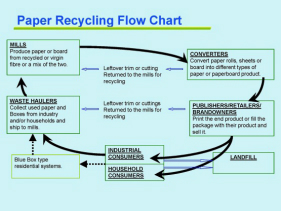 Yes. In the paper industry, however, this fact comes with some caveats. The industry cannot exist without the introduction of virgin fiber at some point in the paper cycle. It needs longer virgin material to replenish the shorter and thinner paper fibers that gradually wear out as a result of repeated recycling. Paper fibers can generally be recycled between four and nine times. In other words, to keep the whole recycling loop going (and to produce recycled content in the first place), we have to have trees or wood chips and sawmill residues somewhere in the system on a regular basis.
Yes. In the paper industry, however, this fact comes with some caveats. The industry cannot exist without the introduction of virgin fiber at some point in the paper cycle. It needs longer virgin material to replenish the shorter and thinner paper fibers that gradually wear out as a result of repeated recycling. Paper fibers can generally be recycled between four and nine times. In other words, to keep the whole recycling loop going (and to produce recycled content in the first place), we have to have trees or wood chips and sawmill residues somewhere in the system on a regular basis.
5. What problems do setting minimum recycled content levels cause?
While it may seem like the “right” thing to do environmentally, the unfortunate reality is that governments and individual companies tend to act in isolation, setting unscientific and competing minimums that suit their perceived (and sometimes narrow) needs. The nightmare scenario for the industry is widely divergent thresholds that bear no relation to the global supply and demand of paper fiber (both virgin and recycled), and a tendency, driven by politics and public relations more than anything else, to leapfrog over someone else’s number.
If the ultimate goal is to achieve a global balance in the use of the world’s forest resources, isn’t it better to allow countries that no longer have sustainable forests of their own (and there are many), to import their needed virgin material from countries (like Canada) that do have sustainable forests, to keep the whole global paper life cycle going? A couple of the tools to do this are bans on illegal logging and independent third-party certification of forests. PPEC is proud to say that there is no illegal logging in Canada, and that every single one of our mill member companies has achieved third -party certification. Canada leads the world in this respect.
We also question whether, in fact, there is really a need for recycled content minimums for paper packaging in Canada. The overall average is already 76 per cent, far higher than any other packaging material has achieved. The overwhelming majority of Canada’s packaging mills are already at 100 per cent recycled content. There is not much more the industry can do.
And then there are imports of packaging board and converted boxes, bags and cartons. Almost half of the paper packaging that Canadians use is imported, either as raw material or as converted product. Any minimum recycled content levels would have to apply equally to imports to meet fair trade rules and various treaty obligations.
Another argument often advanced for setting minimum recycled content levels is that such “green procurement” grows or encourages markets for recycled materials. This is demonstrably untrue for used paper packaging in Canada.
The markets for old corrugated and boxboard are now very mature. Over 80 per cent of Canadians have access to the recycling of these materials and a recent PPEC survey indicated an actual residential capture rate of 65 per cent, over and above what we estimate to be an 85 per cent industrial capture rate for old corrugated boxes nationally. Setting higher recycled content levels than currently being achieved would simply mean that mills would import more used paper and board to meet the minimum thresholds. Capture in Canada itself would be unlikely to increase.
A better and more practical option, in our view, is to ban recycled paper materials from disposal. In fact, PPEC is calling on provinces to do just that, to ban the disposal of old corrugated containers (used corrugated boxes) from private and public sector landfills.
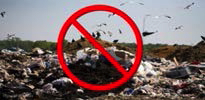 Environmentally, it is the right thing to do (reducing methane and carbon dioxide emissions). Material bans also extend the life of landfills (delaying costly measures to find sites for new ones). And there are also significant operational cost savings to be gained from bans.
Environmentally, it is the right thing to do (reducing methane and carbon dioxide emissions). Material bans also extend the life of landfills (delaying costly measures to find sites for new ones). And there are also significant operational cost savings to be gained from bans.
6. Is the act of increasing recycled content minimums “environmentally better”?
The COMPASS software tool used by environmental advocate GreenBlue and the Sustainable Packaging Coalition (SPC) shows that 100 per cent recycled content has greater global warming potential (GWP) than virgin corrugated board (even when using European data). This is primarily due to differences in mills’ energy sources (biomass versus fossil fuels). It is unclear, therefore, how setting a threshold of recycled content would actually improve overall environmental impact. Further research is underway to determine if there is any co-relation between the two.
For more information on PPEC, visit: www.ppec-paper.com.
Advertisement


